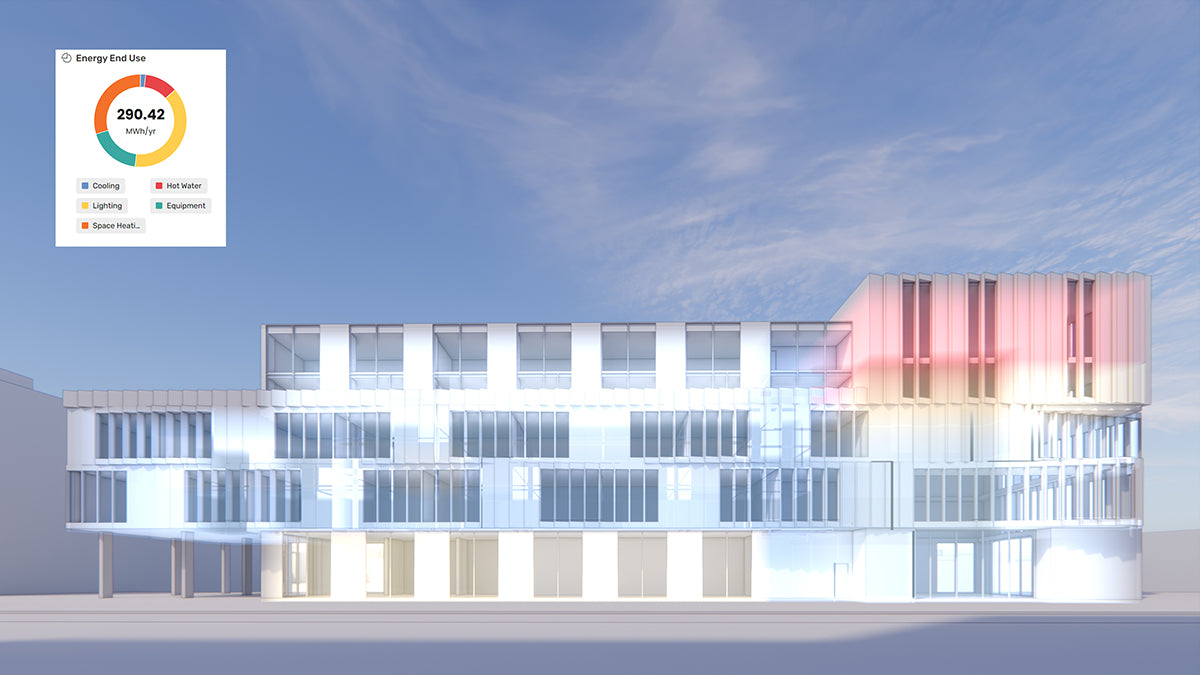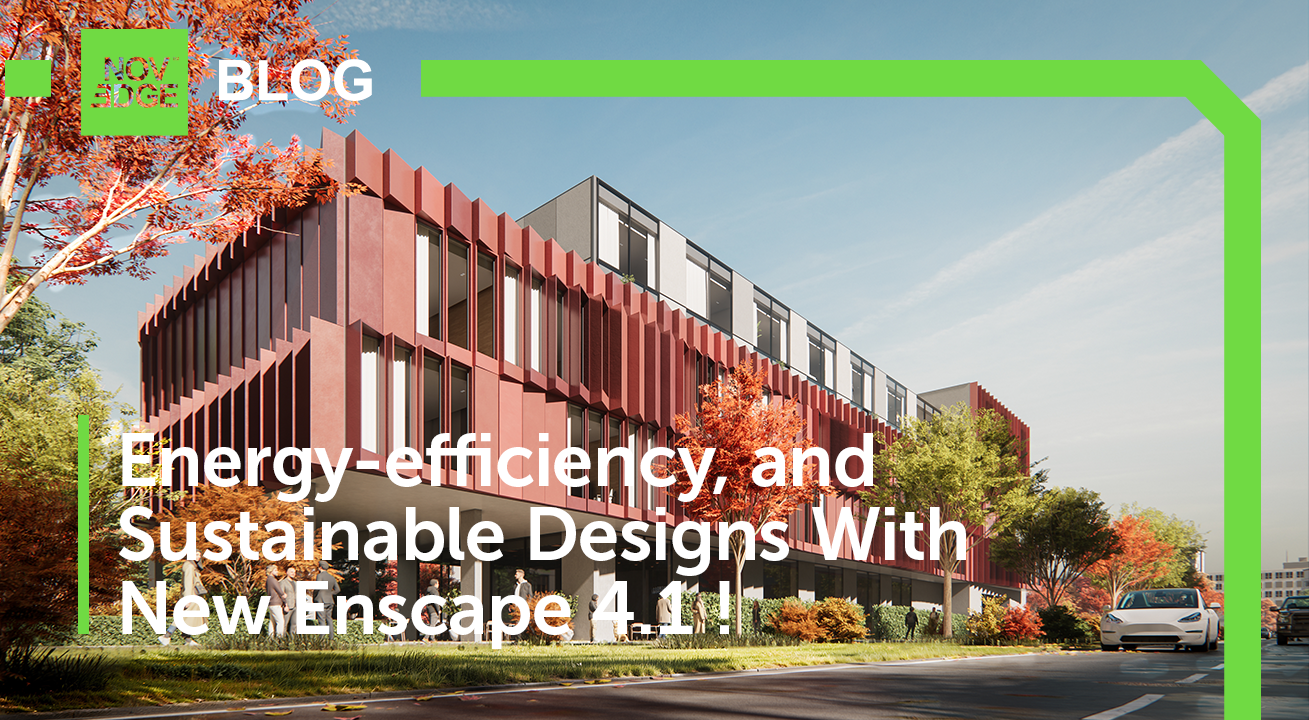Your Cart is Empty
Customer Testimonials
-
"Great customer service. The folks at Novedge were super helpful in navigating a somewhat complicated order including software upgrades and serial numbers in various stages of inactivity. They were friendly and helpful throughout the process.."
Ruben Ruckmark
"Quick & very helpful. We have been using Novedge for years and are very happy with their quick service when we need to make a purchase and excellent support resolving any issues."
Will Woodson
"Scott is the best. He reminds me about subscriptions dates, guides me in the correct direction for updates. He always responds promptly to me. He is literally the reason I continue to work with Novedge and will do so in the future."
Edward Mchugh
"Calvin Lok is “the man”. After my purchase of Sketchup 2021, he called me and provided step-by-step instructions to ease me through difficulties I was having with the setup of my new software."
Mike Borzage
An Interview with Paul Wilkinson, AEC Collaboration Expert and Writer
September 14, 2007 6 min read

Paul Wilkinson is a British AEC expert and writer. In October 2005 he published a very interesting book, Construction Collaboration Technologies: The Extranet Evolution, about collaboration tools and processes for the AEC sector. The book is not an academic exercise but is based on his long professional experience. Paul also keeps a blog (Extranet Evolution) where he discuss topics and issues related to collaboration in the AEC world. It’s surprising to see this kind of initiative coming from a design area that for many years has been considered conservative in the adoption of new software technologies. I asked Paul a few questions to better understand how the AEC sector is evolving and what impact collaboration technologies are having on existing processes.
Paul, can you tell us a bit about yourself and your professional activities?
I ended up in construction almost by accident
I ended up in construction almost by accident. While doing my criminology doctorate at London School of Economics, I needed a part-time job. I ended up working for a consulting engineering practice (Halcrow) for seven years, well beyond my PhD completion. After four years doing PR and marketing for a contractor (Carillion), I ran my own consultancy for a while, then joined start-up UK collaboration vendor BIW Technologies back in 2000. So-called ‘project extranets’ were in their infancy then, but seven years later they have become much more widely used, and BIW is the UK market leader.
While working for BIW, I started two freelance projects in 2005. I wrote the first guide to construction collaboration technologies (“Construction Collaboration Technologies: The Extranet Evolution”, published by Taylor & Francis); then I started writing a supporting blog (ExtranetEvolution.com). While my book is mainly UK-focused, the blog is more international in outlook – I flew over to the US in March last year to attend a collaboration conference at Harvard, and it was interesting to compare extranet experiences on opposite sides of the Atlantic, and I have looked at developments in France, Denmark and Australia, among others.
I’m also active as BIW’s representative in the UK collaboration vendors’ group, the Network for Construction Collaboration Technology Providers (NCCTP) – an interesting example of collaboration vendors collaborating!
You claim that the AEC (Architecture, engineering and construction) sector, always considered the most conservative of the design area, is changing in more ways than we would expect. Based on your experience can you give us some examples?
adoption of BIM will force entire supply chains to collaborate upon shared information from the earliest stages of a project
When I started at Halcrow 20 years ago, most designs were completed by draftsmen working at drawing boards; these drawings were then shared with remote team members in hard-copy form, and comments often took days to arrive back; and designers and contractors tended to keep separate. Today, designers almost always work and communicate electronically, feedback loops are often completed within minutes with much less re-keying of information; and integrated teams – while still not the norm – are becoming more common.
Like many others, I expect such changes to accelerate. Adoption of building information modeling (BIM), in particular, will force entire supply chains – from clients through designers and constructors to manufacturers and materials suppliers – to collaborate upon shared information from the earliest stages of a project. Defensive or adversarial attitudes will hopefully become a thing of the past, but there are some big structural and contractual hurdles to overcome.
I remember during the dot-com boom, everybody was pushing for synchronous-only collaboration solutions. Now we are finally realizing that collaboration is mostly asynchronous. When would you recommend going for synchronous collaboration?
we don’t work in an industry which lends itself to constant synchronous collaboration
Most AEC industry processes currently involve the creation of data and then its onward communication to another person or persons. As that information is often complex, the recipient normally needs time to assimilate and assess it. So we don’t work in an industry which lends itself to constant synchronous collaboration.
However, AEC people still need to communicate in real time. In design team meetings, for example, people will share and exchange ideas and solutions, and employ the full range of verbal, graphical and written communications, plus body language, etc. Face-to-face meetings are ideal then, but sometimes time, distance and/or cost preclude such gatherings and we have to look at alternatives, perhaps audio- or video-conferencing. My experiences to date with these, though, suggests that the technology can often get in the way of truly effective interpersonal communications, but future cohorts of web-savvy AEC professionals may a) have better technologies and b) fewer reservations about using them.
The AEC is slowly embracing 3D, and not only as a way to create nice pictures and videos. How does collaboration differ in a 2D and 3D environment?
3D appraches will not become common-place until fully interoperable BIM solutions become widely adopted
You’re right: 3D was once regarded as a snazzy way to give the client or end-users a “walk-through” the proposed project. These remain useful areas for collaboration, I think (so long as the cost, time and bandwidth involved in creating and exchanging data doesn’t become prohibitive) – especially to involve non-AEC professionals in decisions about their built environment.
But there are other dimensions of the project which can be modeled: time, cost, sustainability, for example. At the BuildingSMART conference in London in May, I saw some good examples of designers and contractors employing ‘nD’ approaches to show the impacts of design decisions on project programs, but these will not become common-place until fully interoperable building information modeling solutions become widely adopted and all parts of the supply chain are involved from the earliest possible stages.
What is the role of visualization tools in a collaboration environment?
visualization tools can help overcome some interdisciplinary issues
The AEC industry is all about delivering projects in the built environment that people will interact with in some way. It is natural, therefore, for people – particularly owners/operators and/or end-users – to want to visualize what the new building, bridge, road or harbor will look like, how it will fit into its surroundings, and how it will be constructed.
Within a project team, too, visualization tools can help overcome some interdisciplinary issues, improving the scope for integration and coordination of design, buildability and facilities management inputs from different professionals throughout the design development phase. Assuming all parts of the supply chain are involved early enough, they could design, construct and even occupy and operate their facility in a ‘virtual’ environment before irrevocable decisions have been taken.
When do you recommend collaborating on the original document and when it is better to work on a digital copy(without the original geometry) such as a PDF, or a DWF ?
some research suggested that, for the majority of team members, access to the native CAD file was unnecessary
When BIW first started offering its collaboration environment to the UK AEC market, we found some research which suggested that, for the majority of team members, access to the native CAD file was unnecessary – most members simply wanted to be able to mark-up (‘red-line’), add a comment, or simply acknowledge that they’d seen it. In such circumstances, digital copies are perfectly adequate (though I have met one or two architects who have resisted using on-screen mark-up tools, preferring – as one put it to me – to “bleed all over paper drawings”). Such copies are also usually smaller file-sizes and so are quicker to open.
There will, of course, always be a minority of team members who would like to be able to re-use native CAD files. So long as the original author of the file is happy to allow this, I don’t see this as an issue – it avoids having to re-key existing data, for a start – though such re-users need to beware of overwriting the original file with their revised version (most collaboration platforms automatically save revised files as new versions, thus maintaining a full change audit trail).
What are the major obstacles that are slowing down the adoption of collaboration tools in the AEC field?
AEC collaboration is at least 80% people and processes and only 20% technology
An industry ‘rule of thumb’ suggests successful AEC collaboration is at least 80% people and processes and only 20% technology.
Accordingly, the major obstacles to adoption tend to relate to the culture, attitudes and behaviours of individuals, departments, organizations and the industry as a whole, or the hierarchies, policies and decision-making procedures created by these. Too many projects are still conducted in an atmosphere of mutual suspicion and distrust. If we can motivate people to work more collaboratively, to share information and work towards agreed objectives, then technology adoption is relatively straightforward.
As technology providers we can do our bit to address the 20%. Thankfully, we have come a long way from the days when professionals insisted on getting information in paper form; inadequate telecomms are less common; and browser-based environments and viewer applications have helped reduce interoperability issues. But genuinely collaborative approaches by the people involved remain the exception rather than the rule, and that’s the biggest obstacle.
I would like to thank Paul Wilkinson for taking the time to answer my questions. If you have any questions for Paul or for Novedge, please leave a comment below and we will be glad to answer.
Franco Folini
Also in NOVEDGE Blog

How the AEC Industry Shifted Towards Essential Sustainable Building Design
August 15, 2024 4 min read
Read More
Unlocking New Realms of Design with Enscape 4.1: Introducing Impact Add-on and Lot More
August 02, 2024 2 min read
Read More
Explore Autodesk Revit 2025.2: New Features and Enhancements for Enhanced BIM Workflows
July 30, 2024 3 min read
Read MoreSubscribe
Sign up to get the latest on sales, new releases and more …


